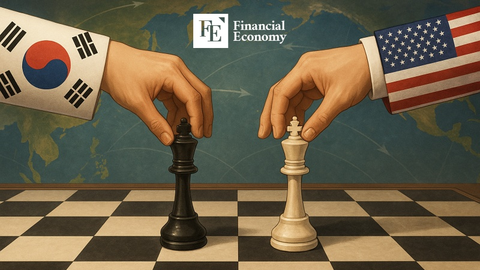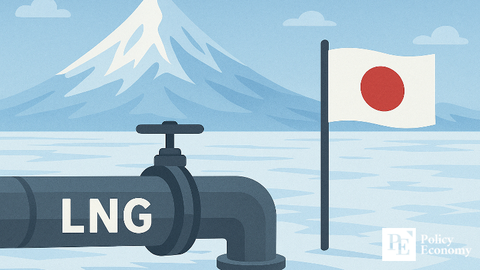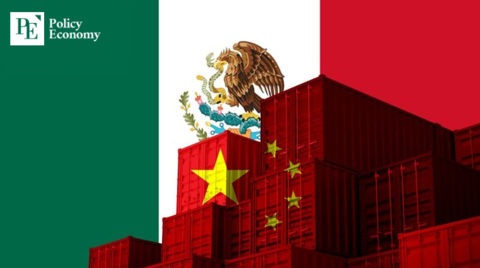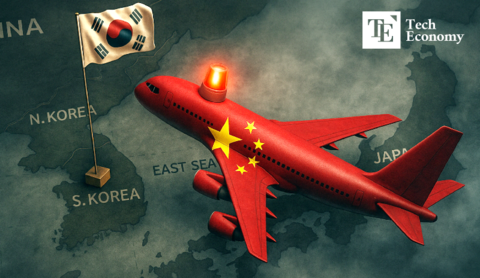“Caught Between China and the Middle East” Korea’s Petrochemicals on the Brink, With No Exit in Sight
Input
Changed
Korea’s Once-Reliable Export Engine, Petrochemicals Global Oversupply Driving the Downturn Vertical Integration Under Scrutiny

Once a pillar of Korea’s exports, the petrochemical industry is in steep decline. China’s capacity ramp-up and self-sufficiency in low-cost products have eroded the very foundation of Korea’s competitiveness. The era of cost advantage has ended, while Beijing’s oversupply shows no sign of abating. This is the price of ignoring years of warning signs. Unlike past cycles where soaring oil prices temporarily squeezed margins, the current crisis is seen as structurally different. With China’s ascent, fundamental challenges loom, and without drastic restructuring, remedies appear elusive. The government has stepped in to broker consolidation among major players, but with global competitiveness already lost, hopes of genuine recovery remain remote.
Yeosu Industrial Complex in Deep Slump
According to the petrochemical and financial investment sectors on the 11th, employees of small and mid-sized firms as well as self-employed business owners in Yeosu are bearing the brunt of the downturn. While major players such as Yeochun NCC and Lotte Chemical have idled some plants to withstand the downturn, suppliers closely tied to petrochemicals are reeling in succession. The Yeosu Industrial Complex posted exports of $33.6 billion last year, down about $310 million from $33.9 billion in 2023.
Even mid-tier firms once regarded as stable employers in the region are faltering. Seomnam Petrochemical, with 130 employees in Yeosu, generated over $770 million in annual revenue between 2022 and 2023, but net profit last year plunged 90% from the previous year’s $230 million. Kumho P&B Chemicals, an affiliate of Kumho Petrochemical, reported sales of $16.9 billion and net profit of $1.77 billion in 2023, but saw revenue fall to $12.8 billion and profit to just $67 million last year. Polymirae, another petrochemical producer, accumulated losses exceeding $370 million over the past three years.
Nowhere reflects the crisis more vividly than Yeochun NCC. Once a cash cow for major conglomerates, it has been mired in losses since 2022. Joint owners Hanwha Group and DL Group injected $770 million each via a rights issue in March, but conditions failed to improve. Last month the company even defaulted on $2.4 billion in debt, facing near-insolvency, before Hanwha and DL extended $1.15 billion apiece in loans to stave off collapse. Yet the infusion only worsened its debt ratio and weakened its financials. Other petrochemical firms face similar predicaments, and a “shutdown domino” is spreading across the industry.
From Complacency to Collapse Under Chinese Pressure
The crux of Yeosu’s crisis lies in China’s oversupply. As a whole, Korea’s petrochemical sector still achieved exports worth $48 billion last year, ranking behind semiconductors, autos, and machinery. But Beijing’s low-price offensive has upended the landscape overnight. After the pandemic, China aggressively expanded capacity to localize feedstocks once imported from Korea. With massive new NCC investments, its ethylene self-sufficiency has neared 100%. In the past decade alone, China’s added capacity has surpassed twice Korea’s annual ethylene output of 12.7 million tons. The once-vast Chinese market has vanished, leaving Korea to compete head-on with Chinese commodity-grade chemicals in global markets.
Industry complacency worsened the blow. For years, Korean producers clung to conventional ethylene production, buoyed by the “China premium,” without shifting to higher-value products. Commodity chemicals such as ethylene are low-margin and technologically undifferentiated, making them vulnerable to Chinese catch-up—a risk long forewarned. Yet investment in research and development for premium products lagged. Ethylene prices have since plunged by more than $500 per ton in just one year. With cheap oil amplifying oversupply, export unit prices dropped 13%, and export value fell to $3 billion, a 10% decline. Lacking China’s cost competitiveness, Korea’s petrochemical sector now sees no viable exit.
Compounding this, Middle Eastern producers are doubling down on downstream diversification under post-oil strategies. Saudi Aramco is building seven refineries and petrochemical plants not only domestically but also in Korea and China. Ethylene capacity in China and the Middle East is projected to expand by 40 million tons between 2026 and 2028. In Korea, Aramco’s affiliate S-Oil is set to complete the $6.9 billion “Shaheen Project” next year, adding 1.8 million tons of annual ethylene production in Ulsan. Existing Korean firms halted new ethylene expansion after 2022 amid oversupply, but oil majors with superior cost efficiency are now pushing into petrochemicals.
Warnings of crisis have mounted since the early 2020s, but both industry and government squandered the window for restructuring, lulled by cyclical swings in oil prices and demand. As a capital-intensive sector with relatively low job creation compared with shipbuilding, steel, or autos, petrochemicals drew little urgency from policymakers. This neglect has now culminated in an existential crisis. A consulting study by Boston Consulting Group for the Korea Chemical Industry Association projected that without restructuring, only half of Korea’s petrochemical firms will survive the next three years.

Grand Surgery Under Way, but Competitiveness Recovery Remote
The government last month unveiled follow-up measures to bolster competitiveness in the sector. But the stance is firm: no “free ride.” Without drastic self-help, no public support will be forthcoming. Finance Minister Koo Yoon-cheol declared, “The problems facing the petrochemical industry are evident, yet domestic producers turned a blind eye. Despite clear signs of Chinese oversupply, companies expanded capacity during the boom years and missed the window to pivot toward higher-value products, leaving them in dire straits.” He stressed that “the only solutions are capacity reduction and fundamental competitiveness. The notion of simply waiting out the storm is untenable. Survival requires a do-or-die determination.”
The centerpiece of restructuring is vertical integration with refiners. By aligning with oil companies, petrochemical firms could secure feedstock cost advantages in naphtha and rationalize capacity. One example is the integration of NCC operations between Lotte Chemical and HD Hyundai at the Daesan complex. Specific options include Lotte transferring its Daesan facilities to HD Hyundai Chemical, with Hyundai Oilbank injecting additional cash or assets.
Yet consolidation is easier said than done. The petrochemical industry has long been built on conglomerate-centric structures, and mergers or spin-offs face competing group interests. The dispute between Yeochun NCC’s co-owners over new investment exemplifies such obstacles. While symbolic consolidations may occur, sweeping voluntary restructuring is unlikely. Some analysts contend the golden hour has already passed; even if consolidation proceeds, with global competitiveness lost, structural revival appears beyond reach.






















Comment